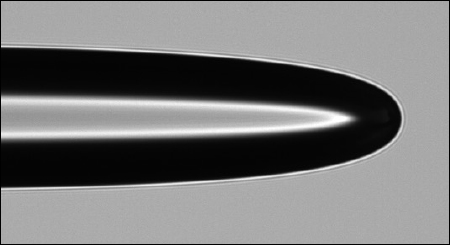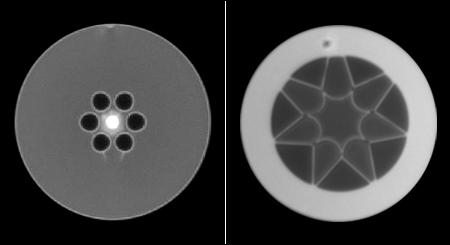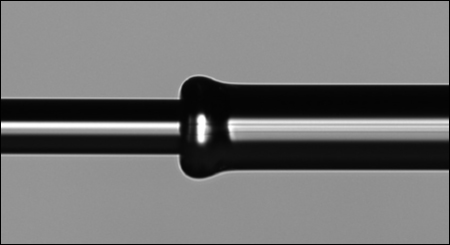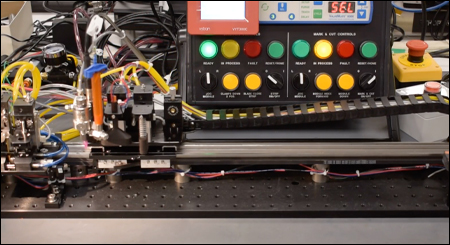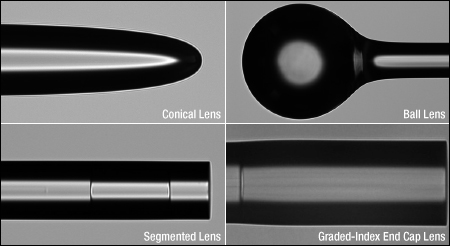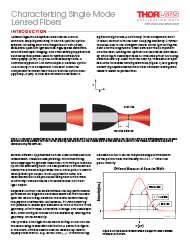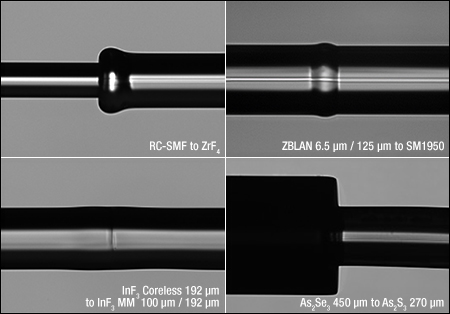 Products Home / 光ファイバー融着接続機(スプライサ)、加工機 / ファイバー加工機 / Vytran® Optical Fiber Glass Processors: Capability Highlights
Products Home / 光ファイバー融着接続機(スプライサ)、加工機 / ファイバー加工機 / Vytran® Optical Fiber Glass Processors: Capability HighlightsVytran® Optical Fiber Glass Processors: Capability Highlights
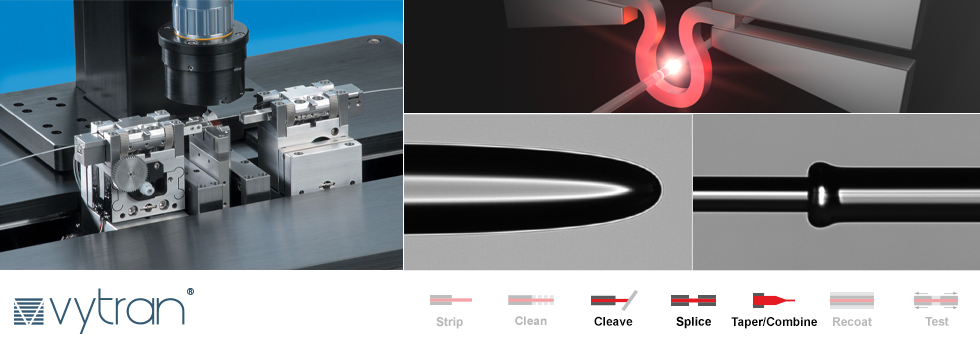

Please Wait
Thorlabs' Vytran® GPX Series Glass Processors are versatile platforms designed for fabricating and characterizing optical fiber with high precision and low loss. Engineered with our proven filament fusion heating technology, these advanced platforms provide exceptional control, stability, and low-loss performance, enabling reliable fabrication of a wide range of optical fibers. Whether driving innovation in telecommunication, sensing, or academic research, the GPX Series can help push the boundaries of what is possible. Click on the images below to see how our GPX Series Glass Processors support high-performance fiber processing across diverse applications.
Summary
Lensed fibers are designed to enhance the coupling efficiency in certain optical systems. Lensing the optical fiber results in small, focused spot sizes and increased working distances, mitigating signal loss due to core size mismatch and the divergent nature of light exiting the fiber. Examples include conical, ball, segmented, and graded-index (GRIN) end cap lenses. Thorlabs' Vytran GPX Series Glass Processors are engineered to create and measure high-quality lensed fiber tips with precision and repeatability.
Applications
- Photonic Integrated Circuit (PIC) Coupling
- Telecommunication
- Biological Imaging
- Optogenetics
- Optical Coherence Tomography (OCT)
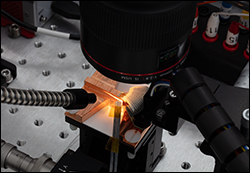
Click for Full Size Image
Lensed fibers can be used for light collection in PIC testing applications. Here, light emitted from a chip is collected by a lensed multimode fiber and coupled into an optical spectrum analyzer. For more information, please see our PIC Demo Testing Station.
Related Content
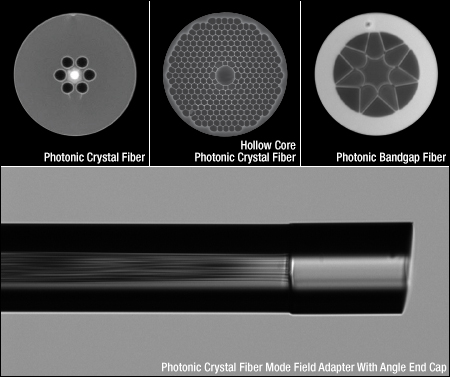
Click for Full Size Image
Examples of Structured Fibers Manufactured Using a GPX Series Glass Processor
Summary
Structured optical fibers are fabricated to include microstructures with specific patterns to produce fibers with unique optical properties. These fibers often include periodic arrays of holes, resulting in a broad range of index profiles for fibers with unique optical characteristics such as high nonlinearity and high birefringence. Thorlabs' Vytran GPX Series Glass Processors are capable of fabricating and processing high-quality structured fiber with precision and repeatability, including photonic crystal fibers (PCFs), hollow core fibers, and photonic bandgap fibers (PBFs).
Applications
- Fiber Lasers and Amplifiers
- Supercontinuum Generation
- Imaging
- Spectroscopy
- Fiber-Optic Sensors

Click for Full Size Image
Thorlabs' Supercontinuum Generation Kit uses a highly nonlinear photonic crystal fiber to spectrally broaden femtosecond pulses near 800 nm. An image of the dispersed supercontinuum output of the SCKB2(/M) kit is shown here; the output beam combines the high power and spatial coherence of a laser with the broad visible-to-NIR spectrum of an incandescent source. For more information, please see our Supercontinuum Generation Kit.
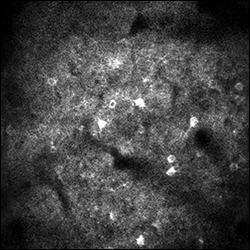
Click for Full Size Image
Thorlabs' Miniaturized Two-Photon Microscope (Mini2P) uses a hollow-core photonic crystal fiber to deliver 920 nm femtosecond laser pulses for stable two-photon imaging. Here, the Mini2P was used to image the spontaneous signal of a mouse somatosensory cortex expressing GCaMP6. For more information, please see our Miniaturized Two-Photon Microscope.
Summary
Soft glass fibers are commonly used in mid-IR applications, but they are notoriously more challenging to work with than silica fibers due to low glass transition temperatures. Thorlabs' Vytran GPX Series Glass Processors have a precisely controlled heat source to handle the delicate processing these fibers require. They are capable of fabricating splices, tapers, couplers, terminations, and combiners using soft glass fiber while maintaining the fibers' strength and minimizing loss.
Applications
- Mid-IR Spectroscopy
- Fiber Lasers and Amplifiers
- Chemical Sensing
- Supercontinuum Generation
- Surgical Lasers

Click for Full Size Image
Thorlabs’ O-Band Fiber Amplifiers (PDFAs) use a fluoride fiber doped with praseodymium (Pr) ions to allow for a higher radiative transition efficiency compared to silica fiber. Shown here is an eye diagram measured by amplifying a 50 GBaud/s PAM4 signal using our PDFA100 fiber amplifier. For more information, please see our O-Band Praseodymium-Doped Fiber Amplifiers.
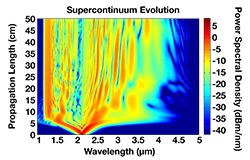
Click for Full Size Image
Thorlabs' Mid-IR and Long-Wave IR Supercontinuum Lasers use a dispersion-engineered indium fluoride (InF3) fiber pumped with a high-power femtosecond fiber laser, resulting in stable pulses from 1.3 µm to 4.5 µm and 3.5 µm to 11 µm, respectively. A numerical simulation of the non-linear processes used to generate the output of the SC4500 mid-IR supercontinuum laser is shown here. For more information, please see our Mid-Infrared Supercontinuum Laser and Long-Wave Infrared Supercontinuum Laser.
Related Content
Summary
At Thorlabs, we recognize that our customers have unique applications that may require specifications beyond our catalog offerings. Our expertise in fiber positioning and automation along with our in-house manufacturing facility enables us to develop custom fiber processing systems with high precision and repeatability to support a variety of applications. To learn more about developing a custom fiber processing system, contact us at techsales@thorlabs.com.
| Posted Comments: | |
| No Comments Posted |
 Capability Highlights Capability Highlights |
